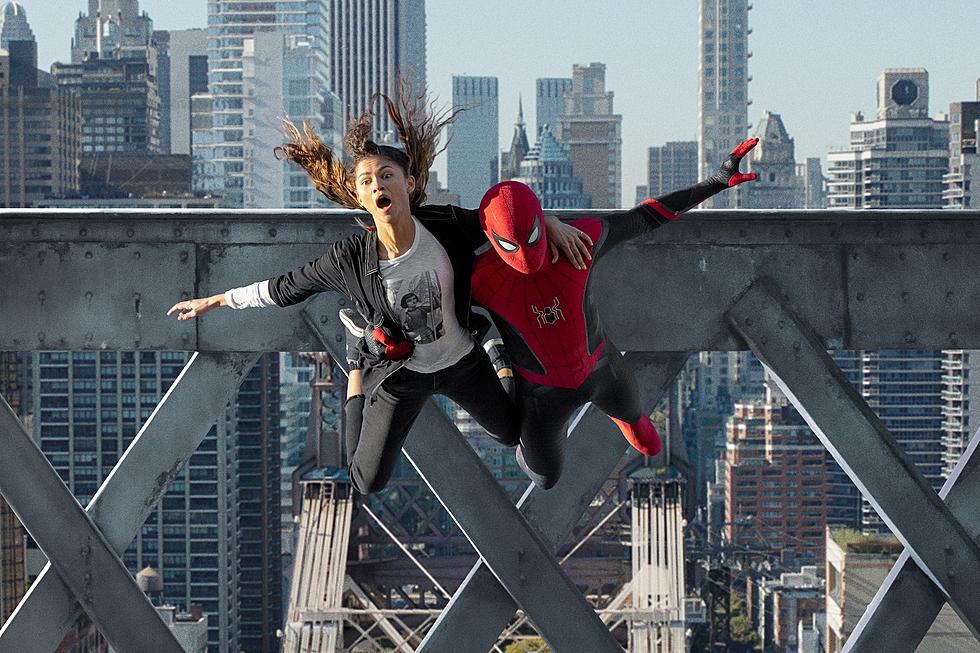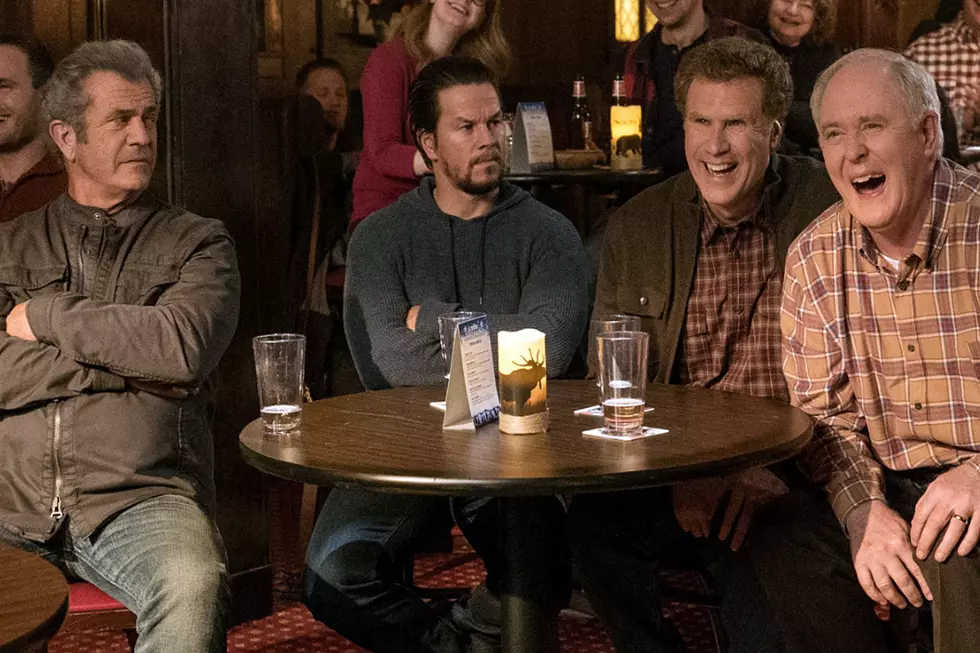
‘Love Is Strange,’ the Most Unexpectedly Important Gay Film of the Year
“I think it’s harder – as hard as it’s ever been – to get stories like this made,” said writer-director Ira Sachs of ‘Love Is Strange,’ his latest film starring John Lithgow and Alfred Molina as an elderly gay couple living in New York City. “If I didn’t have 26 individuals, 23 of whom were gay and lesbian, stand behind me to finance this film, then it wouldn’t exist.”
From 'Behind the Candelabra,' Steven Soderbergh's Liberace biopic that nobody in Hollywood wanted to make, to 'Brokeback Mountain,' Hollywood's leap of faith and Ang Lee's game-changer, filmmakers of gay cinema have had to jump through metaphorical flaming hoops to get their works seen by a broad audience. Given how far our culture has come, though -- for one, Matthew McConaughey and Jared Leto both won Oscars for their leading roles in 'Dallas Buyers Club' earlier this year, while Michael Douglas won an Emmy for 'Candelabra' -- it seems odd that 'Love Is Strange,' a realistic portrayal of gay life in New York without the flashier tales of AIDS, hyper-sexuality and segregation, had to endure the same struggle. But, as Sachs says, "I think there's something radical about this representation even though, in form, it’s a very accessible film, but these are not images we often see of this couple."
When mainstream culture first began embracing the gay community, we were given shows like 'Will & Grace' and 'Queer as Folk,' the former creating the now stereotypical image of the "hilarious gay man," while the latter exacerbated the sexually charged circuits within the community. The same was true for lesbians. Said film scholar B. Ruby Rich in a recent Variety article, "As cheesy as ‘The L-Word’ was, it gave us [lesbians] a face. What is there now?"
The struggles of gay cinema perfectly mirror that of the culture at large. If you recall a scene from 'MILK,' the film that won Sean Penn his second Oscar, Harvey Milk implores the gay community to come out of the closet, saying, "They vote for us two to one, if they know they know one of us." At a time when the LGBT community fought for their rights pre-2000s, we were struggling to be seen, making such outrageous (at times) portrayals of these on-screen characters a necessity in order to to establish some sort of identity. Now that we are more accepted than ever in society and in entertainment, struggling to be seen more as equals to the rest of the world, these images may no longer be necessary, which makes 'Love Is Strange' a refreshing accomplishment.
The film begins with the wedding of George and Ben in a private garden with all their closest family and friends. Shortly after, however, George (Molina) loses his job as a Christian school music director when his wedding and sexual orientation becomes known to the administration, a moment inspired by a real news clipping Sachs read. As a result, the couple are no longer able to afford their home, in which they've lived for more than 20 years, and must rely on their family and friends for support, George crashing on the coach of his younger, gay neighbors, and Ben staying with his nephew's family in Brooklyn.
"I began working on this film in a period where I went from living alone in my apartment to living with my husband, our two babies, their mom and occasional in-laws who would come visit and help with the kids," said Sachs. "And so I was really seeing this kind of multi-generational story take place within the confines of my very cramped New York apartment, and I felt like it spoke to so many things about the cycles of life and real estate and family and love. So I kind of wanted to get all of that into a movie in a certain way."
In an arguably outrageous turn, 'Love Is Strange' received an R rating, prompting some, including Slate, Queerty and Gay Star News, to denounce the MPAA for its so-called standards. Sachs even said, "It’s ridiculous. R is for ridiculous." In a statement we received, the MPAA responded to the rating as follows: "The descriptor that accompanies the film’s rating notes that it is rated R for language – as is any film that includes the same level of strong language." While many may still deem this as a "disguise" for "basic prejudice" (quoting the Slate article), this language barrier speaks to the larger issue with movie ratings, which becomes more heightened as 'Love Is Strange,' with its barely registered curse-word vocabulary, opens in theaters with other R-rated titles as the gory 'Sin City 2.'
As Sachs points out, these are not images we normally see of modern gay couples. "I think that’s one of the things the poster [shown above] for me, for example, which was the image of Ben and George on the street trying to hail a cab. It was very much inspired by an image from 'Midnight Cowboy' of Ratso Rizzo and Joe Buck in Times Square, and I think what both those images try to do, and those films I hope are also accomplishing, is to make iconic these lives that so often go past by unnoticed. These guys, George and Ben, you see every day in the [West] Village, they just don’t usually have their own movie."
Molina was the first of the two leads to be cast, while Lithgow came on board later in the process. As it turns out, Lithgow, at the time, was deciding between Christopher Nolan's 'Interstellar' and 'Love Is Strange,' and he originally decided on Sach's piece. "My agent got involved, and somehow I got to do both," he said during a Q&A for The Huffington Post's 'Day for Night' series. The actors have known each other for more than 20 years now, both having portrayed LGBT characters in the past, as well, which made their on-screen chemistry and comedic banter easy to access. "They’re also brilliant actors as well as brilliant comedians," said Sachs. "I think having the level of humor that they can bring to the roles really gives the film even a deeper kind of lifelike quality."
We were just two straight guys playing two old queens.
"We were just two straight guys playing two old queens," joked Lithgow, but on a more serious note remarked that this was the first time he performed as a gay man while still feeling as though the character of Ben was just as reflective of his own personality. "This was me," he said. "I found it kind of disarming ... a relief."
Though Sachs had nothing but praise to give these two acting giants -- and he's even planning on bringing the humor they established in the film to the stage for a 'Love Is Strange' musical -- a common criticism of gay cinema, especially those that are widley distributed, is regarding the lack of gay actors cast in gay roles. But as Sachs, an openly gay man himself, said, "sexuality in and of itself is not a factor for me in deciding who to cast. Laurence Olivier said, ‘They call it acting for a reason,’ and I believe that we are not so different humanly that our sexuality divides us."
Sachs, now 48, has come a long way from his days directing theatre in his Memphis high school and watching 197 movies in the span of three months while abroad in Paris during his junior year at Yale, and one of the biggest changes that occurred within him as a filmmaker, and more importantly as a gay man, is the acceptance of himself. "I think that, in my early 40s, I became for the first time comfortable with myself, and I think, from that position, I was able to be connected to other people in a new way," he said. "For many of us gay men coming to a point of self-acceptance was hard won, and I actually think the ways in which the film are timely are less due to the particular issues around marriage equality and more how those changes affect individual lives. And for me the optimism of the film comes from, to some extent, how culture embraces me in a different way as a gay man and my relationships."
'Love Is Strange' is now playing in theaters.
More From ScreenCrush









